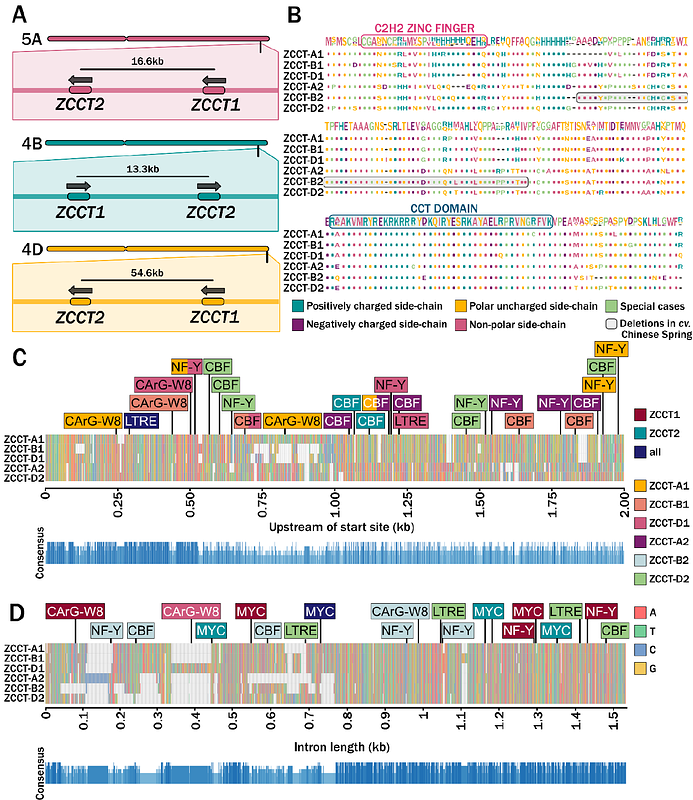VERNALIZATION2 (VRN2) alters early tiller development in a facultative spring hexaploid bread wheat (Triticum aestivum)

VERNALIZATION2 (VRN2) alters early tiller development in a facultative spring hexaploid bread wheat (Triticum aestivum)
Hirsz, D.; Taylor, H.; Lacey, I.; Gauley, A.; Dixon, L. E.
AbstractPlants coordinate growth and development with environmental signals. Specifically, temperature and photoperiod are important regulators to time the transition from vegetative to floral growth. Through utilising these environmental signals potential reproductive success is optimised, which is critical for the production of high crop yields. For cereals, some require a winter before undergoing reproductive development, this extended period of cold exposure enables the process of vernalization and is also important for the synchronized timing of the floral transition. The cereal-specific floral repressor VERNALIZATION2 (VRN2) has an integral role in this pathway, yet this locus remains poorly characterised in hexaploid wheat. Our research in a facultative wheat, suggests that the tandemly duplicated genes comprising the VRN2 locus, ZCCT1 and ZCCT2, respond to multiple environmental factors and have differences in gene expression patterns at a gene and subgenome level. These genes also show co-regulation, forming a regulatory loop between ZCCT-D1 and ZCCT-D2. The function of these genes beyond the classic vernalization response is explored in a facultative wheat with VRN-D2 identified to regulate early tiller development, with an accelerated rate of secondary tiller emergence and presence of coleoptile tillers. This phenotype increases ground coverage more rapidly, which provides agronomic benefits including improved competition with biological stressors. The findings identify that the VRN2 loci in bread wheat is formed of multiple genes which have overlapping but also unique regulation and function. Selecting these genes individually may offer a route to alter wheat plant architecture without directly impacting vernalization requirement.